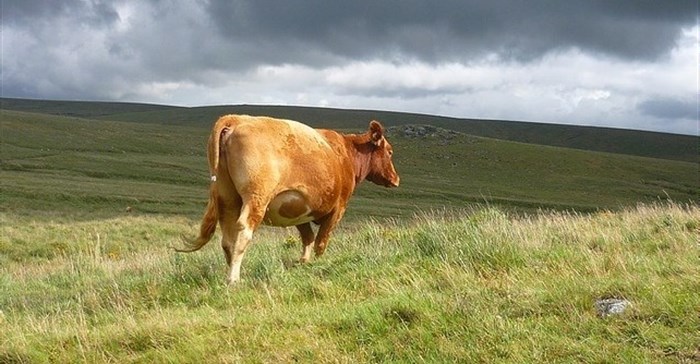The effect of the drought will be visible in the agriculture and food value chains for years to come. Although good rainfall is expected in the coming months, it will not instantly end farmers' challenges or see grazing return to normal within a few days. Free State Agriculture (FSA) shares some advice from Prof. HO de Waal, from the Department of Animal, Wildlife and Grassland Sciences at the University of the Free State.
He focuses on what farmers should do during the traditional trying months of September and October that lie ahead. This year these two months will be even more challenging due to the lack of rainfall in the summer season, hampering re-growth of grazing before winter. Furthermore, many farmers have already incurred great costs to buy stock feed, and their finances cannot withstand more pressure.
Several agriculture businesses have already indicated that they expect that the 2016/17 financial year will be a very challenging year or the industry, with many farmers who will have to get their farming enterprise back on track while managing debt cautiously. Managing studs will also be paramount, especially where farmers could only keep their core herd, and thus have to rebuild their herds.
“Now is truly the time to listen to experts and approach your farming enterprise and challenges scientifically. Do not only focus on short term planning in terms of the current crisis. Don’t lose sight of your long-term plans for your farm when you have to take decisions,” says Henk Vermeulen, chief executive officer of FSA.
Survival of livestock during the coming months - information and message from prof. HO de Waal:
The seasons have started turning. With the onset of the warmer August/September months the situation on veld, especially where sparse grazing material is still available, will change markedly. Older farmers are familiar with the common saying “in September the animals are getting emaciated and in October they are dying!” This will be more pronounced this year.
Livestock, especially thin cattle that held out relatively well during the prevailing drought (feed shortages) are going to lose condition rapidly. This may in part be attributed to dry grass sprouting from their limited root reserves, even with low levels of available soil water. Grazing livestock cannot resist this greener material, especially during periods of severe feed shortages. This results in a waste of precious energy by animals foraging for the sparse new grass sprouts and, furthermore, intake of small quantities green material with a high water content in the digestive tract results in typical wet dung. The faster passage rate of the small quantity of greener material through the digestive tract is detrimental for ruminants under these conditions.
The animals must be given access to hay in the long form (not ground), dry grass hay cut along road reserves and wheat straw/crop residues will come in handy. This will slow down the rate of passage through the rumen. Remember to provide small quantities of N (natural protein or NPN) to the animals.
Feed
Feed pellets are good but relatively expensive feed. The material is ground relatively fine to form the feed pellets during processing. Unfortunately the finer milled roughage also increases the passage rate and the utilization (digestibility – shorter exposure of fibre to fermentation by microbes) is also less effective. If only feed pellets are available as feed source, animals must be rationed – it is not necessary to feed animals full out for survival.
Grazing
It is generally expected that it may start raining during the next few weeks. However, it has never rained feed on veld. After having received effective rain it takes about four to six weeks for good grazing material to develop on veld. Unfortunately the sprouting dry veld is then also very vulnerable. Animals in poor condition are also more vulnerable when soaked by rain during inclement weather. In addition to the factors mentioned previously, young sprouting seedlings are ripped out physically. It will be better – if possible – to keep animals on the less vulnerable grazing/crop residues/planted pastures until new growth on veld is well developed.
Granted, on many farms the advice offered above may be impossible to implement. However, try to minimise as far as possible the short and longer term damage to both the veld and the animals with judicious management.
Many farmers have noted that fewer cows are pregnant after the normal mating season. In panic these animals have been put to the bull again. Those cows that may possibly conceive will now calve down next year during a bad time of the year – it will bring its own share of challenges regarding adequate nutrition.
Finance
Remember to make a realistic effort and maintain a cash flow or arrange meaningful financing to strategically maintain the necessary activities. The financial position of many farmers is already dire. The input by organised agriculture (Agri SA, Free State Agriculture) and commodity organisations (RPO, NWGA, SAMGA, etc.) to assist farmers are welcomed.





























